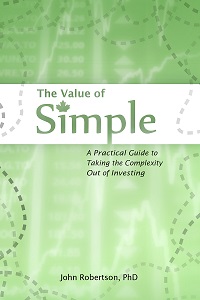Home Maintenance Rule-of-Thumb
May 23rd, 2014 by PotatoBack when we talked about the gross debt service ratio, we discussed how sometimes a simple rule can scale in surprising ways.
A set percentage of your house’s value is a very common rule-of-thumb for estimating ongoing maintenance costs — 1% is typically seen these days (and what I use), though older articles from before the massive run-up in prices can be double that. It’s a tough thing to estimate accurately because there are so many line items and they’re all irregular; however, maintenance is a pretty big part of the cost of ownership so you can’t ignore it when considering the costs of shelter. A rule-of-thumb at least gets it in people’s minds — people who might otherwise only consider the costs they had to pay in the last few months (indeed, so many bad amateur rent-vs-buy considerations just use the mortgage payment). So if it’s even approximately right to +/- 50% I’m happy to continue to spread the rule-of-thumb.
In a comment this morning, Geoff says:
My issue with such articles about homeownership is that anytime they mention home maintenance, they use a percentage of the house value to estimate costs; this worked maybe when home price reflected the size of the house. But there’s no way that my 1961 built 1200 sq.ft house in toronto (worth I’d say $750,000 easy) costs more to maintain than my in-laws 3500 sq.ft house in Trenton (worth I’d say $150,000).
And that’s totally fair. The rule-of-thumb isn’t perfect, indeed even for Geoff and his immediate neighbours their maintenance costs may not be that close because of luck or the materials and workmanship they choose. To some extent size will matter, but a maintenance rule-of-thumb won’t scale perfectly with size, either: it costs so much to get a new furnace in the first place, and only a bit more for a bigger one; likewise the expensive kitchen/bathroom/etc. stuff only scales up a bit for larger houses, with most of the extra space being bedrooms/offices/living rooms that are basically simple shells. And within a jurisdiction size is usually captured by price increases anyway.
But keep in mind that there are other factors that will make a smaller place in the city more expensive to maintain than a larger one in the country, so there will be some scaling with price (though it’s never going to be a perfect set percentage).
For instance, the potentially higher labour costs in the city is a somewhat obvious one, but a much bigger factor is that the standards will be different. More expensive houses (larger or smaller) will be more expensive to maintain because they are lived in by people with more expensive tastes (or are situated in neighbourhoods with more expensive standards). For example, on PEI my parents’ kitchen is now about 20 years old, and still perfectly fine — heck, it’s probably still one of the more recent ones out there! In Toronto a 20-year-old kitchen would be scandalous and require a reno — a 10-year refresh is de rigueur — though in that case it may not be a cash cost as you can choose to not do it and just suffer relative depreciation (or reduced appreciation) relative to the trendy neighbourhood. Likewise, when a kitchen renovation does come up on PEI a whole new set of appliances would likely come in a fair bit under $5000; in a prestigious Toronto ‘hood each stainless steel, celebrity-chef-approved piece might run that much. Similarly for the rest: the standard for outdoor appearance in a less-expensive area might be a bag of grasseed and patience whereas in a million-dollar neighbourhood landscapers, sod, and shrubbery would be expected. Etc.
Indeed, it’s for this reason that I think the more common rule-of-thumb is value-based rather than size-based. And for cases of extremely expensive small properties or very cheap large ones, well, you’ll hopefully know to nudge your estimates up or down appropriately.


 Questrade: use QPass 356624159378948
Questrade: use QPass 356624159378948 Passiv is a tool that can connect to your Questrade account and make it easier to track and rebalance your portfolio, including the ability to make one-click trades.
Passiv is a tool that can connect to your Questrade account and make it easier to track and rebalance your portfolio, including the ability to make one-click trades.
May 28th, 2014 at 11:09 am
Ummm much as I like that you wrote a posting on my comment, I think I have two comments I have to make:
1) My issue with the value of house implying maintenance cost is simply that rarely do people say it’s a general rule, usually it comes across as a law.
2) Your posting is a bit of Toronto-bashing, or at least reads that way. I don’t think I have expensive tastes, but I do prefer not to have a 3 hour commute every day; therefore I live in an expensive neighbourhood. I certainly would never imply that people from PEI don’t have good or expensive taste, just because they live in PEI. Drive around Town, you won’t see bmw’s and mercedes in every driveway either. And personally, I think there should be a distinction between maintenance costs (ie needs, like replacing a broken furnace) and wants (like having new landscaping done).
May 29th, 2014 at 8:47 pm
Aye, people do often get carried away with rules-of-thumb and heuristics — the same problem underlies the “renting is throwing your money away” meme. This maintenance one is especially inaccurate as you note, but I’ve yet to see an alternative formula even this accurate (while still being simple). And it is too large a factor to ignore in rent-vs-buy comparisons.
That last point is another sticking point: for almost all maintenance and renovation costs you can choose to defer or forgo the work and make it non-cash.
June 4th, 2014 at 12:03 pm
I don’t think that Potatoboy is Toronto bashing, people from rural areas tend to be more frugal. Go on MLS and look at houses in rural areas and you’ll notice they lack granite and stainless. Not to say that its always the case, but cityfolk are caught up in keeping up with the jones for fear of unfavorable judgement from their peers. I’ve lived in Toronto for close to 20 years and this is my perception. I think this mentality stems from advertising and marketing campains which people rely on for guidance. I’m not saying its right or wrong, if it increase the value of your house then there is value.